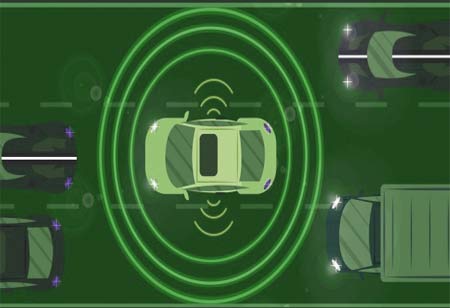THANK YOU FOR SUBSCRIBING
THANK YOU FOR SUBSCRIBING
Be first to read the latest tech news, Industry Leader's Insights, and CIO interviews of medium and large enterprises exclusively from Auto Tech Outlook

By
Auto Tech Outlook | Tuesday, January 03, 2023
Stay ahead of the industry with exclusive feature stories on the top companies, expert insights and the latest news delivered straight to your inbox. Subscribe today.
Europe’s largest port Rotterdam shows how it is leading the way in all forms of future mobility, from autonomous vehicles to hydrogen-powered water taxis.
FREMONT, CA: In their popular 1990s single Rotterdam, The Beautiful South declared that this could be Rotterdam or anywhere. The city is known for its enormous port, which is the largest in Europe and was formerly the largest in the world until Singapore overtook it at the turn of the twenty-first century. On the surface, however, there is nothing particularly noteworthy about the city.
Although it has a lesser population (6000,000 vs 800,00), Rotterdam is less touristy and immediately picturesque than Amsterdam. The Germans badly attacked Rotterdam during World War II. Therefore, many of its historic structures perished. Because of this, while some of the architecture is stunning, most is especially modern by European standards, and the neighbouring old town squares reflect this.
Instead, during the 1950s to 1970s, rebuilding largely emphasised the rise in automobile ownership, much like other highly bombed cities in the UK like Birmingham and Coventry, which similarly underwent renovation with drivers' requirements as a top emphasis.
The Program Manager of Mobility at the municipal authority pointed at a busy roundabout with a few fountains but little space to sit and relax. Interestingly, compared to 10 years ago, we have a completely new vision of mobility, and they're starting to change this big car boulevard into a more pedestrian-friendly area.
The first is to make more room for people to walk, bike, and take public transportation. The second is to offer safer ways to get around the city. The third is to develop a more inclusive transportation system that everyone can use. The last, but certainly not least, is to develop a transportation system that can move goods smoothly across the city.
Since this is the Netherlands, it goes without saying that bikes and mopeds command attention in Rotterdam's mobility revolution. Similar to other Dutch cities, there are bike lanes everywhere. While in London, it's not uncommon to find oneself in a bike lane with no barriers separating from fast-moving traffic. These are typically also separated from vehicles to promote safety.
It began with an unusual bike ride around the city. It will take a little while to get used to the wide variety of different types of two-wheeled vehicles on the road, though, including cargo bikes with front baskets large enough to hold several bags of groceries, bikes for people with disabilities, and those for riders carrying children.
There are also the typical rental electric mopeds and minibikes, but strangely, none of the (legal) e-scooters are increasingly common in cities like London and Paris. This is due to a tragedy that occurred in the Netherlands in 2018 when four kids perished in the back of an electric stint cart. E-scooters are, therefore, occasionally on public roads in Rotterdam, but they are typically used illegally by youngsters.
 Copyright © 2025 AutoTech Outlook. All Rights Reserved | Privacy Policy | Subscribe | Sitemap | About us | Feedback Policy | Editorial Policy
Copyright © 2025 AutoTech Outlook. All Rights Reserved | Privacy Policy | Subscribe | Sitemap | About us | Feedback Policy | Editorial Policy 



